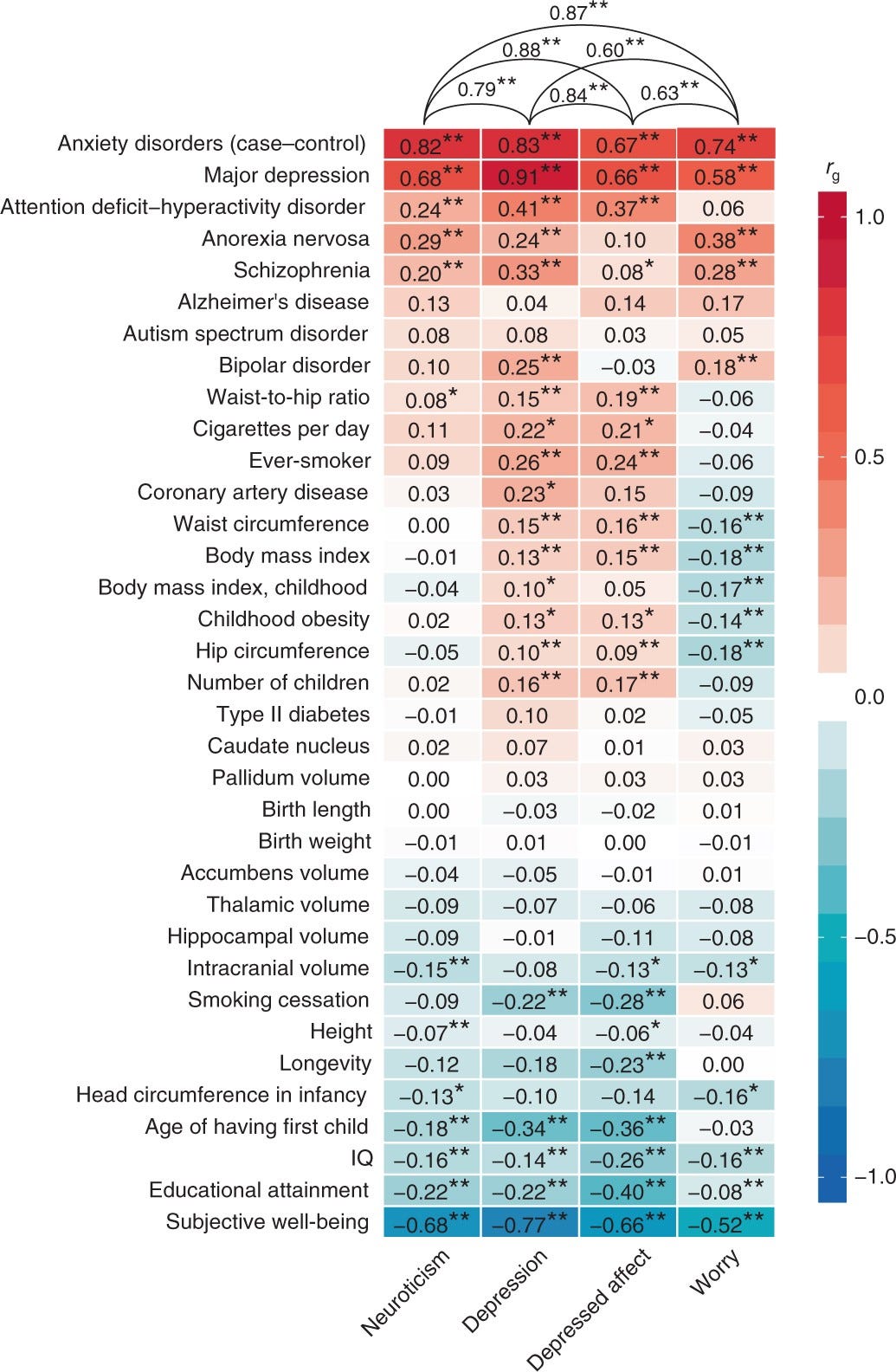I will write about personality syndromes in a few sections. I will start by describing personality in general and what characterizes a fragile personality structure. After that, I plan to delve into a few treatments, primarily those available for Emotionally Unstable Personality Syndrome (EUPS, also known as borderline).
What is personality?
By personality, we mean people's relatively stable patterns of emotional, cognitive, and behavioral reactions. It is often said that a person is one way or another, and in such cases, people are usually referring to the individual's personality. In classical psychological literature, there has been interest in personality for many years, leading to the creation of numerous theories. What these theories have in common is that they are poorly empirically supported and rather reflect the originator's own ideas.
An example is Hans Eysenck's personality model. He constructed an assessment scale and divided personality into two dimensions: extraversion and neuroticism. Different combinations of these dimensions result in various personality types. In fact, this has some similarities to the ancient Galenic model where high neuroticism and high extraversion correspond to a choleric personality. Similarly, low neuroticism and extraversion correspond to a phlegmatic personality. Furthermore, Eysenck attempted to link the degree of neuroticism and extraversion to various biological phenomena, such as the degree of excitability in the cerebral cortex. Perhaps his most controversial claim was about certain personalities having a higher risk of getting cancer. For example, he spoke about the risk of cancer if one smoked and had personal connections to the tobacco industry.
The most widely accepted model for personality today is the so-called Five Factor Model. This model is atheoretical and emerges by searching for underlying factors in personality data. People are asked to respond to a series of questions about their personality, and several questions address the same factors. The factors identified are: openness, conscientiousness, extraversion, agreeableness, and neuroticism. In English, these are often abbreviated as OCEAN after openness to experience, conscientiousness, extraversion, agreeableness, and neuroticism. For example, individuals with high neuroticism tend to react to stress with negative emotions such as anxiety, worry, or anger. Sometimes, it is also referred to as emotional instability. It's important to note that everyone who undergoes a personality assessment as described above falls somewhere on a spectrum; in other words, they are not a specific "type." Most people fall in the middle of the distribution, while a smaller percentage fall unusually high or low. Here, you can take a free personality test, and below, you can see my result.
In summary, this results in low scores on neuroticism, high scores on openness, agreeableness, and conscientiousness, and moderately high scores on extraversion. I answered the questions quickly and was in a good mood, which could certainly affect the outcome.
Where does our personality come from?
One way to find out where our personality comes from is through classical heritability research, where personality is measured in individuals with varying degrees of relatedness. If monozygotic twins (identical twins) have a much greater overlap in personality compared to dizygotic twins (fraternal twins), even though all have grown up together, one can conclude that personality has a high heritability. I have written more about this in the Genetics section. In a study from 1996 with 123 pairs of monozygotic twins and 127 pairs of dizygotic twins, a heritability of 40-60% was found for the five factors. Many can probably relate to resembling their parents and siblings not only in appearance but also in personality. However, everyone is not entirely alike. It is also common for many to see clear behavioral differences in their children early in life, perhaps even as infants. How our personality is shaped during upbringing is a significant area of research. Some infants are calm and content, while others are fussy and demand attention. This difference is often apparent and is explained by differences in temperament. This is considered a more fundamental trait than personality and is present from birth. By definition, temperament is relatively independent of factors such as education and is considered biologically determined. However, our temperament does influence our personality.
Just like other higher cognitive functions and behaviors with some heritability, personality depends on a large number of genes. There is no single gene for neuroticism! In a large meta-analysis of genome-wide association studies (GWAS) for neuroticism involving 449,484 individuals, 136 significant loci in the genome were found to be associated with neuroticism. It is already known that the degree of neuroticism is linked to a variety of negative outcomes, ranging from depression to somatic conditions. In the figure below, the genetic correlation with various conditions was examined. For example, the correlation with both depression and anxiety disorders is significant and substantial (0.68 and 0.82).
As evident, heritability is not 100%, indicating that it is also influenced by unique and shared environmental factors. In the twin study mentioned earlier, it is found that essentially only unique environmental factors explain the remaining variance in personality. This means that the shared environmental factors (such as how the parents are, etc.) for the two twins have little explanatory value. However, there are various unique environmental factors that can be important, ranging from the friends one has to experiences of bullying or performance in school. In popular psychology, people's personalities—especially deviant personalities—are often explained by early life attachment or trauma. However, this is not empirically supported.
This was a brief introduction to personality in general. In the next section, I plan to introduce personality syndromes, i.e., when one's personality is deviant in some way and leads to impairment.






